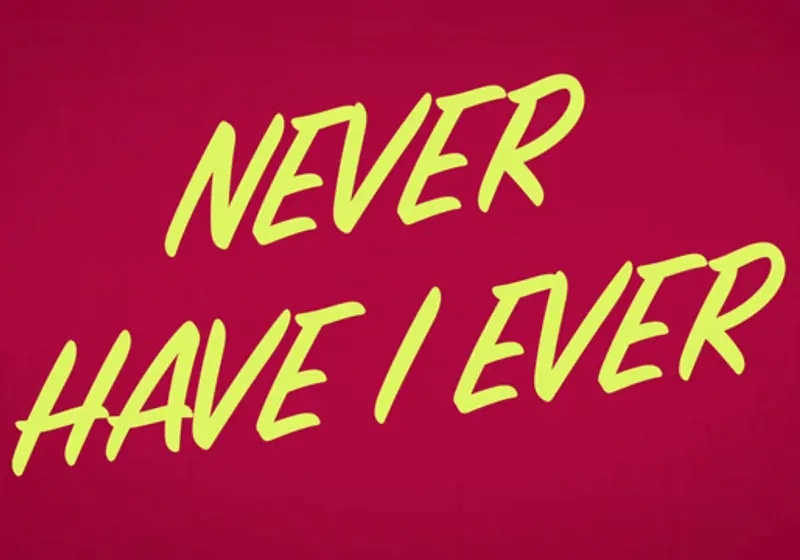For the Teen Magazine readers who might not have heard of this show, Never Have I Ever is essentially a Netflix Original that is the very embodiment of the coming-of-age genre. The show depicts coming of age in the exact way that most high schoolers encounter: school crushes that leave your heart broken at the end of the day, tussles with people you consider your best friends, and assignments that are somehow always pending. A likely broken ceiling and an edgy staircase also add to this.
At its most spartan description, Never Have I Ever chronicles the misadventures of the theatrical world of Devi Vishwakumar, an Indian high schooler at Sherman Oaks High.

Image Credits: Venti Views from Unsplash
Let us slide into your dms 🥰
Get notified of top trending articles like this one every week! (we won't spam you)The Individuality of the Show
What makes the show such an important watch is the essence of it—the main character. Specifically, the “Indian-ness”, which is not something a quintessential American main character is.
While Asian representation in media is a topic of its own, South Asian representation specifically has yet to see the light of the day. Never Have I Ever marked the first time a first-generation Indian-American character was portrayed in media as a main character.
Like Kunal in The Big Bang Theory or Chirag Gupta in The Diary of A Wimpy Kid, it is rare to see Indian characters occupying the spotlight; Indians are often reduced to humorous side characters, always there but only in the background. The word “Indian” is often exposed to a lot of raised eyebrows and stereotypes that are yet to be completely debunked.
Whether it's comic relief or the side character that never finds love, Never Have I Ever opened up a lot of firsts in the realm of both representation and for young South Asian girls to feel seen in the media they consume.

Image Credit: Kelly Sikkema from Unsplash
Hence, a lot of viewers, including me, felt spoken for when an Indian girl was represented in Western media, pujas, ethnic clothes, and the whole lot.
To propel ahead a specific example, the final episode, Episode 10, has the entirety of Devi’s group gathering together to celebrate an Indian wedding. Fabiola and Eleanor, Devi's best friends who aren't Indian themselves, arrive decked head to toe in Indian clothing, tailored to their unique individuality.
The scene isn’t just heartwarming to watch, it is the very depiction of what proper representation in media can do.

Take the Quiz: Which Bruno Mars Jam Matches Your Vibe?
Find out which Bruno Mars hit perfectly captures your unique style and energy!
A Focus on Humour and Heart
Apart from the rightful representation of Asian girls, the plot and dynamics of the show deserve a section of their own as well.
Mainly, the show features well-developed characters who represent different ethnicities and sexualities. This offers a truly refreshing departure from homogenous teen dramas. The supporting characters help in adding depth and humor to the main plot line.

Image Credit: Jakob Owens from Unsplash
What’s applause-worthy is how all the other characters have their own stories depicted. From Devi's mother Nirmala to her best friend Eleanor, all the characters written off as the “sides” get to showcase struggles that were specific to the development of their story line as well as their moments of triumph.
Oddly specific moments I genuinely enjoyed watching were Fabiola advocating for a more girl-student inclusive robotics club and an entire episode dedicated to Columbia University aspirant Ben Gross!
Other side plots include the familial aspects of Devi’s household being brought to the forefront and Paxton, in particular, is seen experiencing the feeling of being excluded- something he, as a “hot pocket”, had never gone through before. Episodes like these not only tie up the characters’ psyche together in the minds of the viewers but also give the characters an extra dimension, a third layer that wasn’t visible in the former episodes.
A Refreshing Take on High School
While the show does rely on stereotypical high school plot lines, it still manages to present a refreshing take on the genre of overdone high school television dramas.
The Love Triangle, which is often an unsaid given in high school dramas, is done to perfection in this show. The classic love triangle in question is executed with Devi, the brainy overachiever, Paxton, the popular jock, and Ben, the nerdy rival. This set-up is executed without excluding the individual personalities of the three and still developing their unique story lines.
Despite using classic tropes, the show doesn't ever shy away from exploring issues of cultural identity, neglect, first-generation struggles, and the pressures of academic achievement. Devi's struggles in connecting with her Indian roots and her relationship with grief are major themes that the show grapples with.
The seasons succeed in showcasing the fact that both healing from a traumatic event, as well as growth, are not linear. This not only brings closure to Devi as the main character but also succeeds in conveying the aforementioned message to younger audiences who might be grappling with such problems in their personal lives too.

Image Credit: Robin Jonathan Deutsch from Unsplash
However, the antics of Devi are often overdone. While some may argue that it's completely normal to throw tantrums, I do believe the show would have benefitted from showing Devi dealing with her anger and grief in a more productive way. For example, if Devi had actually utilized her “grief journal,” the viewers could have also benefited from a fresh perspective on dealing with tough emotions.
Devi's last-minute acceptance to Princeton was also extremely unrealistic and high school freshmen watching the show could have very well taken it literally! Hence, the show could have benefited from more additions of realism.
The ultimate aim of the show, in my opinion as a viewer, is not just to depict a version of the high school experience but also to depict a journey of self-discovery and self-acceptance.
Ending Thoughts
To tie it all together, Never Have I Ever is fallible and fractious, but it is also relatable and realistic; these are the aspects that make it truly worthy of a stellar rating and a wholehearted recommendation.






.jpeg)
.jpeg)





